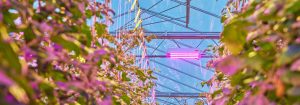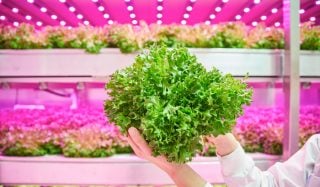Be the first! Get the latest news and updates - Subscribe to our newsletter!
Save on energy cost with dynamic lighting
Energy prices fluctuate

Finding the right range
Cost-effectiveness can therefore be regarded as a dynamic game with different variables, such as the PAR sum to be given per day or week, the required amounts of LED light to supplement natural daylight up to those amounts. And also the distribution of lighting periods and lighting duration over the course of the day and week in order to achieve those amounts as economically as possible. To achieve the highest level of energy efficiency, you can also vary the spectrum offered, minimizing the use of colors that are less efficient but sometimes necessary or desirable (e.g., far red and green/white light), to the greatest extent possible. Of course, the lighting installation and software must be appropriate for this. Lastly, we will need practical research and experience to demonstrate which range can be utilized and what savings can actually be achieved.
Common sense
How would growers be able to save costs right now with a seamless dimmable LED installation and the right program to control it? First of all, by saying goodbye to fixed patterns. Let yourself be guided by the crop and the daylight that’s already available, and supplement that as needed. Think of light as a dynamic growth factor, just like temperature. This allows you to use lighting, at the full power available, during the inexpensive hours, such as at night and certain times during the day, instead of in the early morning and late afternoon, and also more on weekends when electricity prices are relatively low.

Putting it to the test
In the winter of ’22-‘23, in comparative trials at Botany, we tested the combination of timing and light sum based on the energy price in tomato crops. This was done in two compartments that received the same light sum on a weekly basis. Compartment 1 was lit at a constant light intensity of 220 μmol/m2/sec and a day length of 18 hours. In the adjacent compartment, dynamic lighting was provided at a maximum light intensity of 300 μmol/m2/sec, but also dimmed. The minimum light intensity during the lighting period was always 50 µmol/m2/s. This minimum depends on, among other things, the variety, crop strength and plant load, and may be slightly higher depending on the stage and load. It was controlled based on electricity rates, with the highest light intensities being used during weekends and at night. This meant that the highest greenhouse temperatures were also reached at those times. This is where it differs from the current cultivation method. In practice, the aim is often to achieve a temperature peak in the afternoon. In the pilot, the lighting control is a bit more extreme than is usual in practice, in order to define the range of dynamic lighting step by step.
How far can you go?
Over the course of cultivation, we saw differences in crop results. Depending on how strictly lighting was controlled, the energy costs were up to 8% lower while the crop performed similarly in terms of both production and quality. As the crop was exposed to light at less expensive times of day, the average price per kWh is lower and the fixtures also becomes more efficient when you dim. This reduces the total energy consumption. We have not observed any difference in photosynthetic activity, which leads us to conclude that the growth potential is equal. Another thing that stood out was that the generative growth of the crop in the dynamically controlled compartment could be managed a little easier, so this crop had a slightly better balance in the crop. This did not, however, result in any difference in production. We also noticed that evaporation was slightly higher in the dynamically lit compartment, but this did not result in any changes in quality. Finally, we saw that fruit weight differed between the two compartments during cultivation, even though production remained the same. Apparently, the assimilate balance is influenced by the lighting schedule.

Peer Hermans is a plant specialist at Signify specializing in soft fruit, lettuce, and young plants. His focus is on translating research into practical advice for growers.
Related articles
Contact us
Contact certified partners
Philips products are sold through a global network of certified partners. Find partners in your region for more information about Philips LED grow lights.
Contact Philips
What are the best LED grow lights for your situation? We are here to help. Please use our form to submit your request.
Interested?
Learn more about LED lighting in horticulture by reading our latest articles and case studies.



